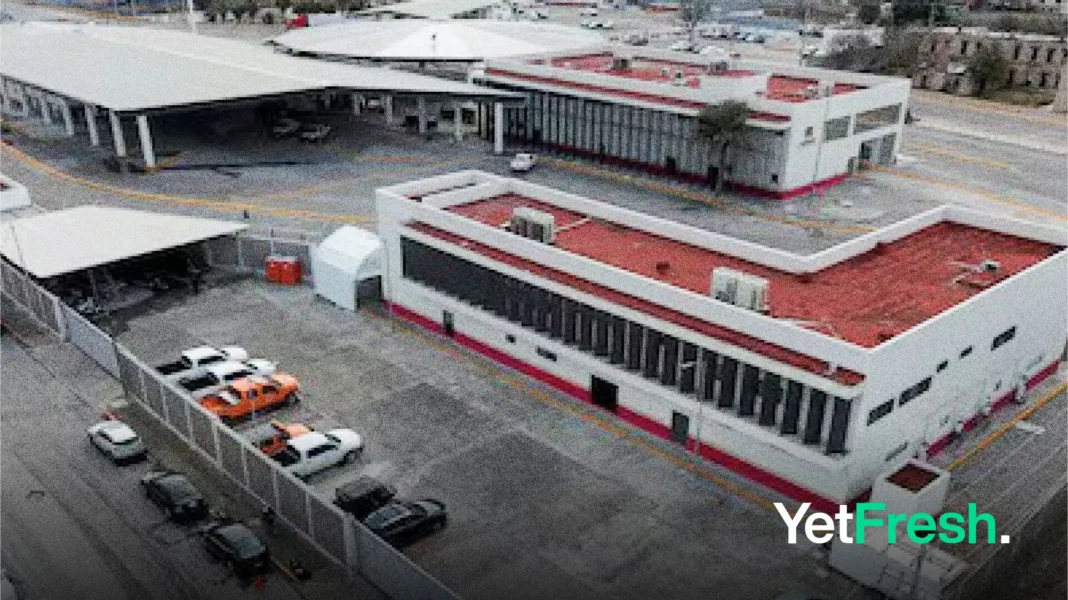Summary:
- Mexico is constructing temporary shelters in border cities like Ciudad Juarez to prepare for mass deportations under U.S. President Donald Trump’s immigration policies.
- The shelters, part of the “Mexico Embraces You” program, will provide food, housing, medical care, and transport for deportees.
- Concerns arise over Mexico’s readiness to handle millions of deportees, with fears of economic strain and overwhelmed border cities.
- Strict U.S. immigration measures, including reinstating the Migrant Protection Protocols (MPP), are exacerbating challenges for migrants and Mexican authorities.
CIUDAD JUAREZ, Mexico — As the U.S. government under President Donald Trump moves forward with plans for mass deportations, Mexican authorities are racing to prepare for an anticipated influx of deportees along the northern border. In Ciudad Juarez, a key border city across from El Paso, Texas, sprawling tent shelters are being erected to accommodate thousands of individuals who may soon be forced to return to Mexico.
Municipal official Enrique Licon described the effort as “unprecedented” during a site visit on January 21, 2025. Workers unloaded construction materials in an empty lot near the Rio Grande, where temporary shelters are being built. These facilities are part of a broader strategy outlined by the Mexican government, which aims to establish reception centers in nine border cities. The centers will provide deportees with food, medical care, temporary housing, and assistance in obtaining identity documents under a program titled “Mexico Embraces You.” Additionally, buses will be deployed to transport individuals back to their hometowns.
The urgency stems from President Trump’s pledge to carry out what he has called the largest deportation effort in U.S. history. With nearly five million undocumented Mexicans currently residing in the United States, according to data from Mexican think tank El Colegio de la Frontera Norte (COLEF), the scale of such an operation could overwhelm Mexico’s resources. Many of these individuals hail from regions plagued by violence and poverty, such as Michoacán, Guerrero, and Chiapas.
Despite assurances from Mexican officials that they are prepared, concerns persist about the country’s capacity to handle the situation. Immigration advocates warn that mass deportations could saturate border cities like Tijuana and Ciudad Juarez, where existing shelters are already strained. The reinstatement of strict U.S. immigration policies, including the Migrant Protection Protocols (MPP), has further compounded challenges by forcing asylum seekers to remain in Mexico while their cases are processed in U.S. courts.
Jose Luis Perez, a former migration official in Tijuana, publicly questioned Mexico’s readiness earlier this week, stating that “the government isn’t coordinated to receive them.” Hours later, he was dismissed from his position—a move he claims was retaliatory.
Mexican Interior Minister Rosa Icela Rodriguez has sought to reassure the public, stating that “Mexico will do everything necessary to care for its compatriots.” However, economic realities may complicate these efforts. Analysts warn that a surge in deportations could lead to a sharp decline in remittances—funds sent home by Mexicans working abroad—which are a critical lifeline for many communities.
On January 22, soldiers in Ciudad Juarez worked into the evening constructing an industrial kitchen at one of the new shelter sites. The location holds symbolic weight; it is near a tall black cross where Pope Francis held a mass in 2016 and prayed for migrants facing humanitarian crises.
The Trump administration’s immigration crackdown has also raised broader geopolitical questions. Mexico recently agreed to accept some non-Mexican migrants deported from the U.S., signaling a shift in policy amid pressure from Washington. Mexican President Claudia Sheinbaum has emphasized her administration’s commitment to providing humanitarian aid but acknowledged logistical and financial challenges.
While preparations continue on both sides of the border, uncertainty looms over how these policies will unfold and their long-term impact on migrant communities and bilateral relations between Mexico and the United States.
Source: Reuters




